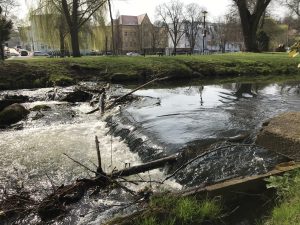
A tiny waterfall, super- and subcritical flows, submerged hydraulic jump, standing waves. What more could anyone want?
Last stop on my work trip that — apart from doing important work, obviously — brought me to Berlin for some wave watching and to Brodowin to look at beaver…
